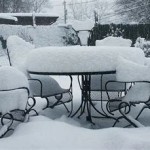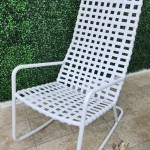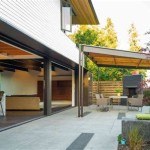How To Remove Moss From Brick Paver Patio Slabs
Moss growth on brick paver patios is a common issue, particularly in damp and shaded environments. While moss can add a certain rustic charm to some landscapes, its uncontrolled proliferation on brick pavers can pose several problems. It can create a slippery surface, increasing the risk of falls, especially when wet. Furthermore, moss retains moisture, which can contribute to the degradation of the brick pavers over time, especially in climates prone to freezing and thawing. Beyond safety and structural concerns, excessive moss growth can also detract from the aesthetic appeal of the patio, obscuring the natural beauty of the brick.
Therefore, the removal of moss from brick paver patios is a necessary maintenance task to ensure safety, prolong the lifespan of the pavers, and maintain the desired aesthetic. Several methods exist for removing moss, each with its own advantages and disadvantages. The choice of method often depends on the severity of the moss infestation, the type of brick pavers, and personal preferences regarding the use of chemicals. This article will provide a detailed overview of various techniques for removing moss from brick paver patio slabs, encompassing both manual and chemical approaches, along with preventive measures to minimize future growth.
Understanding Moss and its Growth Factors
Before embarking on the removal process, it is crucial to understand the nature of moss and the factors that contribute to its growth. Moss is a non-vascular plant that thrives in moist, shady environments. It reproduces through spores, which are dispersed by wind and water. When these spores land in a suitable location, they germinate and develop into new moss plants. The key elements that facilitate moss growth include:
Moisture: Moss requires consistent moisture to survive and reproduce. Areas with poor drainage or frequent rainfall are particularly susceptible to moss growth.
Shade: Moss prefers shady conditions as direct sunlight can dry it out. Patios located under trees or adjacent to buildings are more prone to moss infestation.
Acidity: Moss tends to thrive in acidic environments. Soil pH can influence moss growth, and locations with acidic soil may experience more significant moss problems.
Poor Air Circulation: Areas with stagnant air are more conducive to moss growth. Good air circulation helps to dry out the surface and inhibit moss development.
By understanding these factors, it is possible to implement preventive measures to minimize moss growth on brick paver patios. Addressing drainage issues, providing adequate sunlight and air circulation, and potentially adjusting soil pH can help to create a less favorable environment for moss to thrive.
Manual Removal Methods
Manual removal methods involve physically removing the moss from the brick pavers. These techniques are generally environmentally friendly and effective for small to moderate moss infestations. Several tools and techniques can be employed for manual removal:
Stiff-Bristled Brush: A stiff-bristled brush, such as a deck brush or wire brush, can be used to scrub the moss off the brick pavers. This method is most effective when the moss is relatively loose and not deeply embedded. Wetting the pavers beforehand can help to soften the moss and make it easier to remove. The brushing action should be firm and consistent, ensuring that all traces of moss are removed from the surface and between the pavers.
Putty Knife or Scraper: For more stubborn moss growth, a putty knife or scraper can be used to carefully lift the moss from the brick pavers. This method is particularly useful for removing moss from crevices and joints. It is important to use caution when scraping to avoid damaging the surface of the brick pavers. A plastic scraper is generally preferred over a metal one to minimize the risk of scratching or chipping the brick.
Pressure Washer: A pressure washer can be an effective tool for removing moss from brick pavers, especially for larger areas. The high-pressure water stream dislodges the moss and washes it away. However, it is crucial to use the pressure washer with care to avoid damaging the pavers or eroding the joint sand. A wide fan nozzle should be used, and the pressure should be adjusted to a level that effectively removes the moss without causing damage. It is also important to maintain a safe distance from the pavers and to avoid directing the water stream at vulnerable areas, such as the joints between the pavers. After pressure washing, it may be necessary to refill the joints with sand.
Boiling Water: Pouring boiling water over the moss can kill it. This method is best suited for small areas in conjunction with a brush or scraper. It’s important to exercise caution when handling boiling water to avoid burns. Repeated applications may be needed for thick moss growth.
After manual removal, it is important to thoroughly clean the area to remove any remaining moss fragments and spores. This can be done by sweeping or rinsing the pavers with water. It is also advisable to apply a moss-inhibiting solution to prevent future growth.
Chemical Removal Methods
Chemical removal methods involve using chemical solutions to kill or inhibit moss growth. These methods can be effective for large or severe moss infestations, but they require careful handling and consideration to minimize potential environmental impact. Several chemical solutions are available for moss removal:
Bleach Solution: A diluted bleach solution (1 part bleach to 10 parts water) can be used to kill moss on brick pavers. The solution should be applied to the affected areas and allowed to sit for 10-15 minutes before scrubbing with a brush and rinsing thoroughly with water. It is important to exercise caution when using bleach, as it can be harmful to plants and can discolor some types of brick pavers. It is recommended to test the solution on an inconspicuous area first to ensure that it does not cause any damage or discoloration. Bleach is also a toxic chemical and should be used with proper safety precautions, including wearing gloves, eye protection, and protective clothing. Avoid contact with skin or eyes, and do not inhale the fumes.
Vinegar Solution: White vinegar is a natural alternative to bleach and can also be effective in killing moss. A solution of equal parts white vinegar and water can be sprayed or poured onto the moss-covered areas. Allow the solution to sit for several hours or overnight before scrubbing with a brush and rinsing with water. Vinegar is less harsh than bleach but may still cause discoloration on some types of brick pavers, so testing on an inconspicuous area is recommended. The effectiveness of vinegar may depend on the type and thickness of the moss, requiring multiple applications for stubborn growths.
Commercial Moss Killers: Several commercial moss killer products are available on the market. These products typically contain ingredients such as ferrous sulfate, zinc sulfate, or potassium salts of fatty acids. It is important to carefully read and follow the manufacturer's instructions when using commercial moss killers. These products can be effective, but some might also stain certain types of pavers, so a test area is essential before full application. Many of these products are designed to be watered into the moss, and multiple applications may be required for complete eradication. The primary benefit of commercial products is the targeted eradication of moss with formulas designed for the situation; the con is the possibility of non-targeted damage to surrounding plants or landscape.
Copper Sulfate: Copper sulfate can be very effective at killing moss and algae but it is also a strong chemical. It should be used sparingly and with great care as it can be harmful to plants and aquatic life. It's crucial to follow the manufacturer's instructions carefully and avoid runoff into gardens or waterways. Protective gear, including gloves and eye protection, is essential when applying copper sulfate.
After applying any chemical solution, it is important to thoroughly rinse the area with water to remove any remaining chemicals and prevent damage to the brick pavers or surrounding vegetation. It is also advisable to take precautions to protect nearby plants and pets from exposure to the chemicals.
Preventive Measures to Minimize Moss Growth
Preventing moss growth is often more effective than repeatedly removing it. Several steps can be taken to minimize moss growth on brick paver patios:
Improve Drainage: Ensure that the patio has proper drainage to prevent water from pooling on the surface. This may involve adjusting the slope of the patio or installing drainage systems to redirect water away from the area. Proper drainage is critical in eliminating the moisture that moss thrives on, and is a foundational step in keeping any patio moss free.
Increase Sunlight Exposure: Trim overhanging trees or shrubs to increase sunlight exposure to the patio. Sunlight helps to dry out the surface and inhibit moss growth. Pruning dense foliage and ensuring adequate sunlight reaches the pavers is a very effective long-term strategy.
Improve Air Circulation: Prune dense vegetation around the patio to improve air circulation. Good air circulation helps to dry out the surface and prevent moss from taking hold. Ensuring adequate space and airflow is a key preventative measure.
Maintain Joint Sand: Regularly sweep or blow debris from the patio and refill the joints between the pavers with sand. This helps to prevent moss from establishing itself in the joints. Joint sand is the barrier that prevents moss spores from contacting the damp environment where it thrives, and it needs to be consistently maintained.
Apply Moss Inhibitors: Apply a moss-inhibiting solution to the brick pavers on a regular basis. These solutions typically contain ingredients that create an unfavorable environment for moss growth. Regular application of moss inhibitors helps to establish an environment where moss struggles to survive.
Regular Cleaning: Regularly sweep or wash the patio to remove moss fragments and spores. This helps to prevent moss from establishing itself on the surface. Regular maintenance is the simplest, and often most effective, deterrent to moss growth.
By implementing these preventive measures, it is possible to significantly reduce moss growth and maintain a beautiful and safe brick paver patio for years to come. Consistency in preventive maintenance is the key to long-term success.

Get Rid Of Patio Moss The Paver Savers Northampton Pa

How To Remove Moss From Pavers A Handy Guide

6 Tips On Removing Moss From Pavers Aviara

Cleaning How Do I Remove Moss From An Outdoor Brick Walkway Home Improvement Stack Exchange

How To Kill And Prevent Sidewalk Patio Moss

Removing Block Paving Moss From My Driveway Helpful Colin

How To Remove Moss And Mold From Brick Stone Pavers

How To Remove Moss From Pavers A Handy Guide
How To Clean Moss Off Patios Driveways Paths

Remove Algae And Lichen Off Patio Pavers Like Rick Wet Forget Blog
See Also








